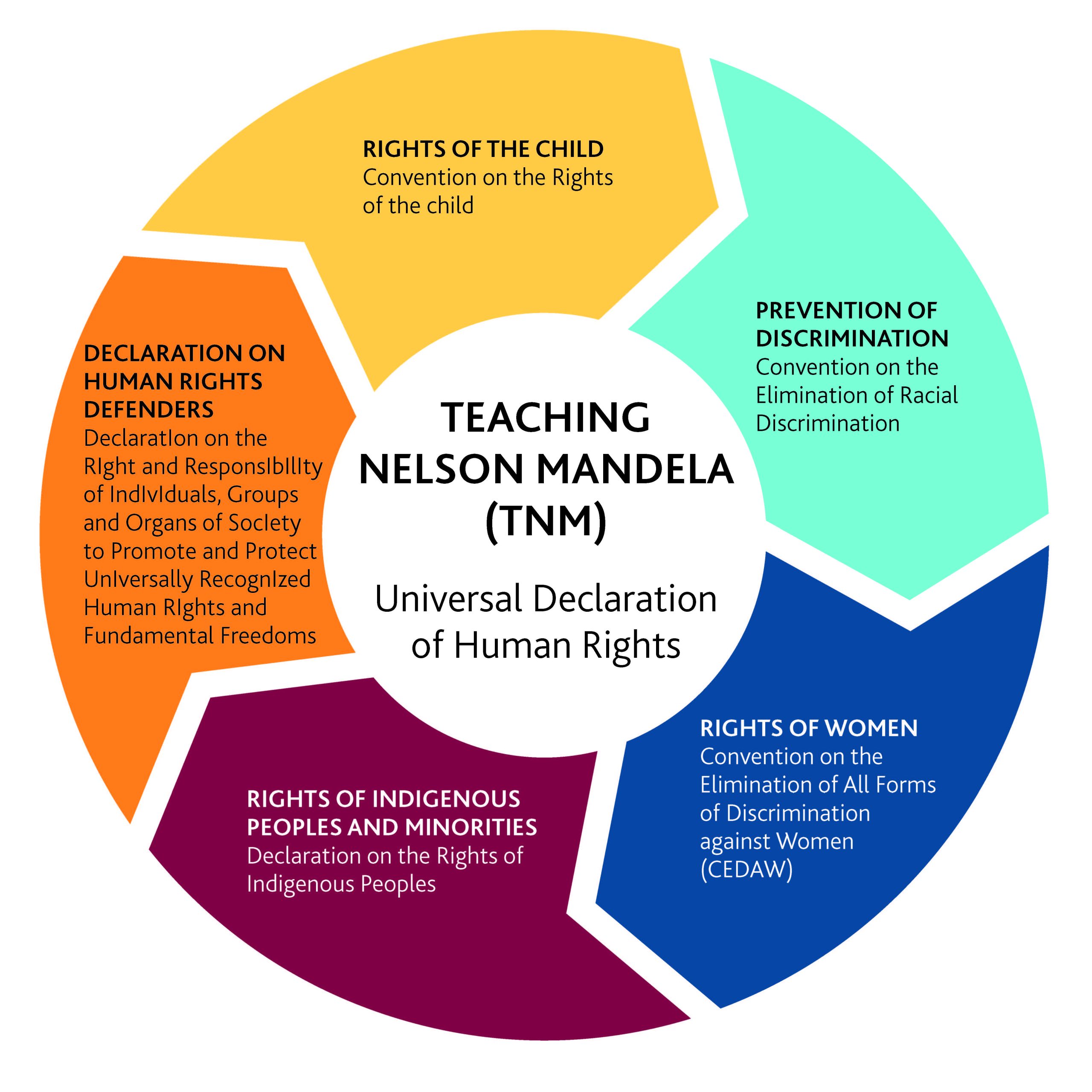Section 6: The ‘Universal Declaration of Human Rights’
Human rights are incorporated into each lesson. Nelson Mandela’s struggle for freedom and that of his people galvanized the attention of the UN. In many ways the South African Apartheid government flagrantly disregarded every human rights section of the Universal Declaration of Human Rights (UDHR). No doubt, the deplorable disregard for human life led to South Africa being expelled from the United Nations. The expulsion decision was supported by John Diefenbaker, the Prime Minster of Canada. Dr. Yvan Brochu and Mr. Craig Marlatt address the leadership role Canada took in that regard. The Teaching Nelson Mandela (TNM) UDHR visual featured in Section 6 of this teacher guide, represents the connected approach used by the curriculum developers, between the focus on the people and their struggle, as well as the support of the UN.
The apartheid South African government challenged human rights at its very core and the UN working in consort with UNESCO answered by appealing to member nations moral conscience about the injustices. For example, materials were developed in order to arm international antiapartheid organizers with information that was accurate about the human right abuses on one hand, while the apartheid government attempted to camouflage these realties through propaganda. Dolana Mogadime’s lesson, Apartheid as a Social Policy, demonstrates the important work of the UN in disrupting mistruths.[2] The UN Advanced resolutions in the face of the repression experienced by the majority of people who were only asserting their rights to assembly, to protest peacefully against apartheid laws. Instead, the government answered with violent brutality. As a result of the 1960 Sharpeville massacre involving the senseless killing of innocent people and children, the UN declared March 21 as the International Day for the Elimination of Racism and Discrimination.
Nelson Mandela International Day (July 18)
The Nelson Mandela Decade of Peace (2019 – 2028)
The International Decade for People of African Descent (2015 – 2024)
Human Rights Instruments
Mandela Global Human Rights: Peace, Reconciliation and Responsibility: A Teacher Guide and Lessons for Educators is firmly rooted in the study of Mandela’s life and contributions. In the lessons provided, the human rights instruments test the boundaries relative to broad areas that need further advocacy and support, such as: The Rights of the Child; The Prevention of Discrimination; Rights of Women; Rights of Indigenous Peoples and Minorities; Declaration on Human Rights Defenders (Dolana Mogadime)
- Section 6 was developed by Dolana Mogadime, Ph.D., Professor, Brock University. ↵
- See, Mogadime, D. (TNM Advisory Group Chair and Project Lead) with Senior Advisory Members, Anneke McCabe, Sally Hooper and Sherilyn Lehn. Teaching Nelson Mandela: Learning Experiences and Lessons to Support Grade 7-12 Classrooms. Canadian Museum for Human Rights, EPublication. ISBN: 978-0-9813127-7-4. Licensed under Creative Commons Attribution-Noncommercial-ShareAlike 4.0 International (CC BY-NC-SA 4tin.0). ↵


